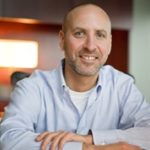A University of Utah psychologist has teamed with Tom and Ray Magliozzi, hosts of NPR‘s "Car Talk," to offer the Driver Distraction Center as a resource to combat distracted driving. David Strayer, Ph.D., who runs the Applied Cognition Laboratory at the University, has been studying the distracted driving issue for 10 years. The laboratory is described as:
Over the last decade, the University of Utah has been studying driver distraction to better understand how and why people can become overloaded while multi-tasking. We use sophisticated equipment, including driving simulators, eye trackers, and we also measure brain activity (electroencephalography) and use neuroimaging technology (functional magnetic resonance imaging) to understand the cognitive neuroscience of driver distraction.
And its Mission is:
Our mission is to make our roads safer by reducing driver distraction, which has become an epidemic on our roadways. The laboratory at the University of Utah conducts state of the art research to better understand the impact of advanced in-vehicle technology on driver distraction. Some of the newer technologies have contributed to the problem of distracted driving, whereas other technologies are helping to solve the problem. The research at the center addresses three specific goals associated with the most prominent form of wireless communication, the cellular phone. First, we conduct scientific research that documents the effects of wireless communication and related technologies on driving performance. Second, we compare and contrast the increased risk associated with using these technologies to other real-world activities. Finally, we provide a theoretical account for why these technologies disrupt driving performance. The research conducted at the center will provide essential information for the development of public policies aimed at saving lives by reducing driver distraction.
It is the science of distracted driving that makes this Mission so important:
The Science of Distracted Driving
by Nathan John Medeiros-Ward
University of Utah Applied Cognition LaboratoryThe odds of getting into a crash are 4 times higher when a driver is talking on the cell phone. To put the 4-fold increase in crashes in perspective, the odds of crashing are the same when driving drunk (at a blood alcohol level of .08 – the legal limit in all 50 US states). Simply put, driving while talking on a cell phone is like driving drunk (at least in terms of crash risk).
There is no safety advantage for hands-free cell phones (both hand-held and hands-free cell phones are associated with a 4-fold increase in the crash risk). Despite the laws in several states, research that has compared hand-held and hands-free cell phones does not find a safety advantage for one over the other.
The odds of crashing while texting are eight times higher than driving without distraction. That is twice the crash risk of a drunk driver (at a blood alcohol level of .08)! Drivers texting also have difficulty staying in their lane. The data indicate that if you text while driving, you will eventually cause a crash.
The brake reactions of a driver talking or texting on the phone are slower, increasing both the likelihood and severity of accidents.
Talking on a cell phone causes inattention blindness, where drivers look but fail to see things on the roadway. Drivers can fail to see up to half of the things that they would have seen had they not been talking on the phone. In fact, the brain activity for processing brake lights and traffic signals is cut in half when talking on a cell phone.
Carrying on a conversation with a passenger does not cause the kinds of impairments that we see with cell phone conversations. The passenger acts as another set of eyes and often adjusts their conversation as driving becomes more difficult. Passengers also help the driver by identifying hazards and helping the driver to navigate. On the whole, these helpful benefits of the passenger offset any costs of conversing.
For more information, visit the Applied Cognition Lab at the University of Utah.
Distracted driving has skyrocketed to the top of the list of dangers we face on the road because of the technological advances we all enjoy and have integrated into our lives. Each one of us must not only be aware of the dangers posed by distracted driving, but we also must help raise awareness with others. Please do your part and be safe out there.

Bret Hanna of Wrona DuBois in Utah, focuses exclusively on litigating plaintiffs’ medical malpractice and catastrophic personal injury cases. He has represented clients in state and federal courts, in mediations, and in administrative proceedings in Michigan and Utah since 1991.











Comments for this article are closed.